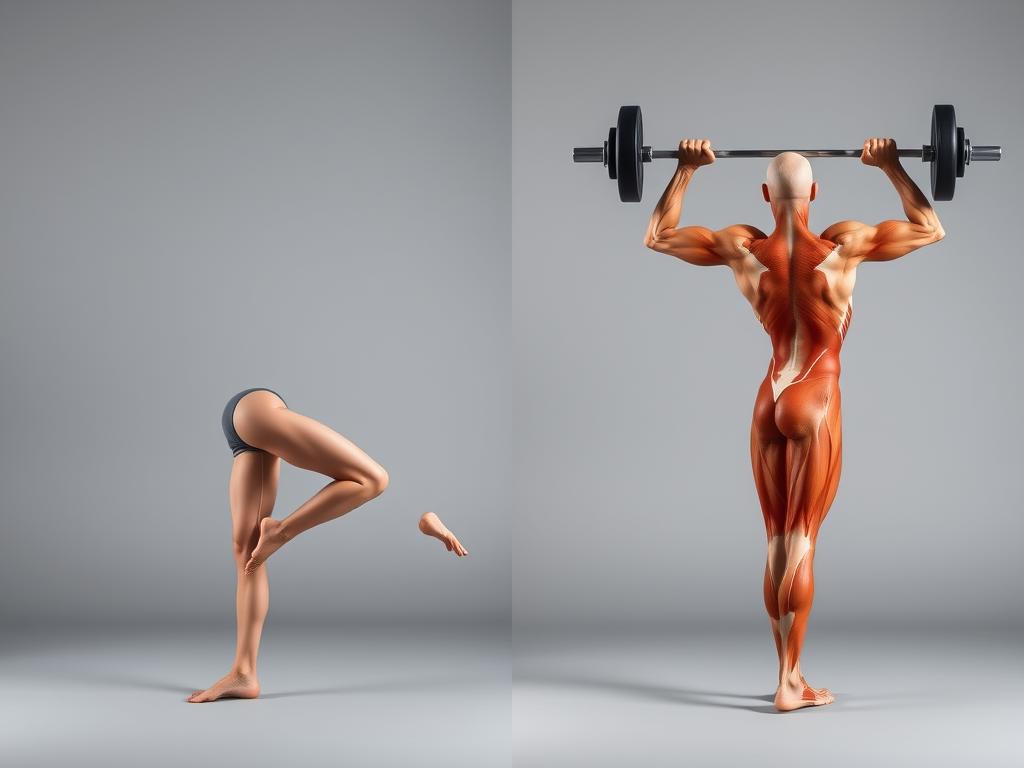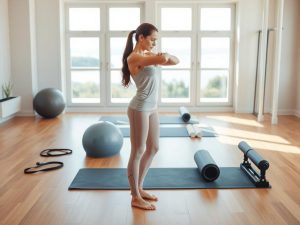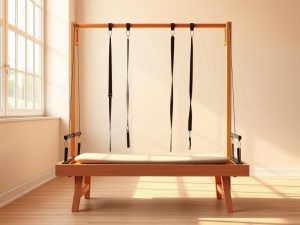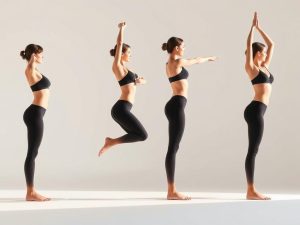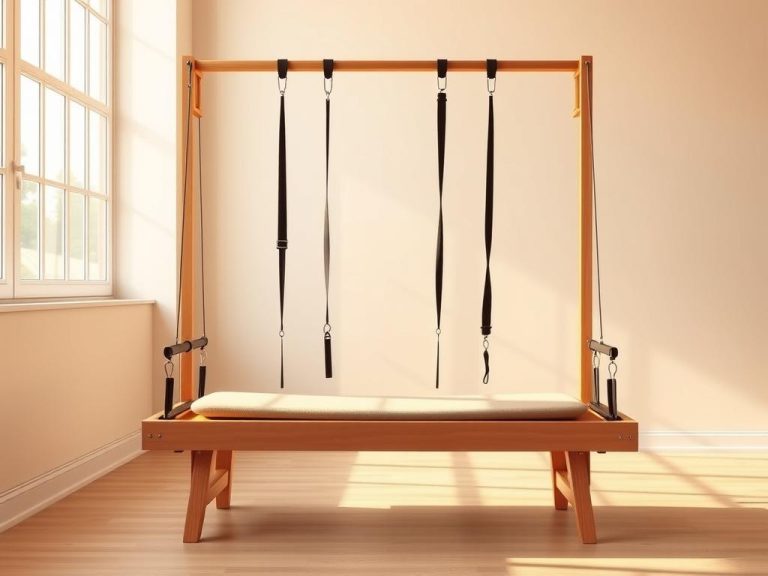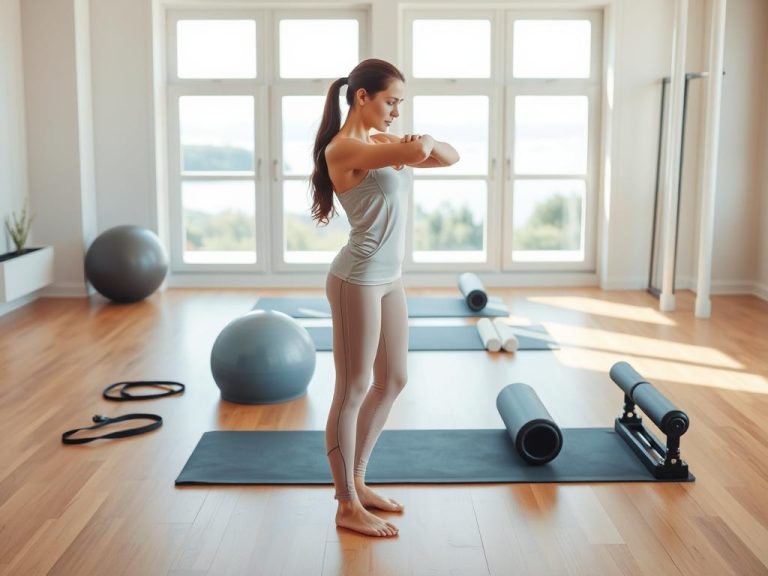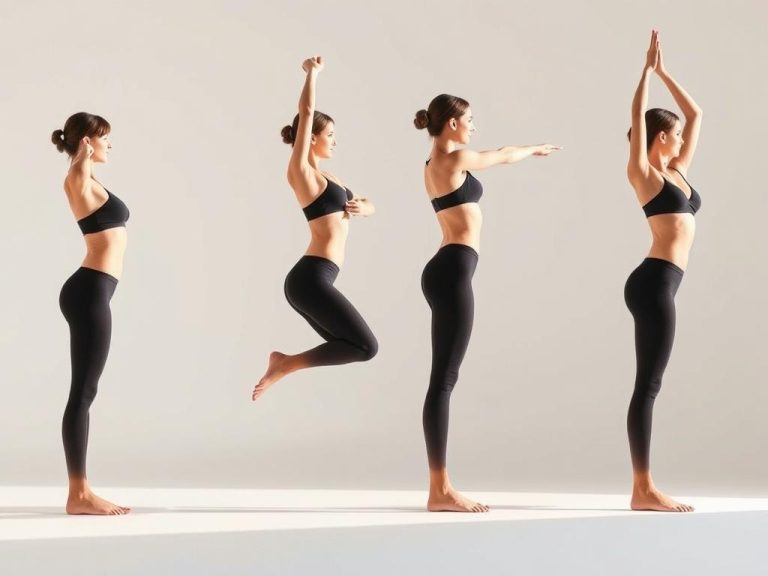Pilates vs. Weightlifting: Which One Is Right for You?
Choosing the right fitness method is crucial for achieving your health goals. Pilates and weightlifting are two powerful approaches to strength training. Each offers unique benefits for transforming your body12.
Weight training is excellent for muscle development and boosting metabolism. Regular training can lead to impressive gains in muscle strength and mass. Research shows a 37% increase in muscle strength and a 7.5% boost in muscle mass1.
Pilates focuses on core strength, flexibility, and overall body awareness2. This low-impact exercise suits various fitness levels and age groups. It’s particularly good for improving posture and reducing injury risk2.
Weight training keeps burning calories even after you’ve finished exercising1. Pilates shows great potential for rehabilitation and injury prevention1.
Your fitness goals will guide your choice between Pilates and weightlifting. Both methods can transform your physical wellness. Consider what you want to achieve: muscle definition, core strength, or overall body conditioning.
Understanding the Fundamentals of Both Training Methods
Pilates and weight training are two distinct yet complementary fitness approaches. Each method targets physical strength and overall wellness differently. They offer unique benefits through varied exercise techniques3.
Pilates Definition: A Holistic Approach
Pilates is a sophisticated exercise method focusing on controlled bodyweight movements. It emphasises exceptional core engagement3. This discipline prioritises five critical aspects of body mechanics.
- Precise breathing techniques
- Cervical alignment
- Rib and scapula stabilisation
- Pelvic mobility
- Transverse abdominis activation4
Weight Training Basics: Building Muscular Strength
Weight training uses external resistance like dumbbells, kettlebells, and barbells to create muscle tension3. The main goal is progressive muscle development through strategic loading techniques4.
Key Differences in Approach and Technique
| Characteristic | Pilates | Weight Training |
|---|---|---|
| Primary Focus | Core strength and flexibility | Muscle mass and strength |
| Equipment | Bodyweight, mat, minimal props | Dumbbells, barbells, machines |
| Energy Expenditure | Low4 | High4 |
Both methods enhance physical fitness but differ significantly in approach. Pilates prioritises controlled movements and body awareness. Weight training emphasises muscle hypertrophy and strength progression4.
The key is understanding that no single exercise method is superior; the best approach depends on individual fitness goals and physical conditions.
Benefits of Pilates for Body and Mind
Pilates transforms fitness beyond traditional methods. It benefits both physical and mental well-being. This makes it an excellent choice for those seeking overall health improvement.
Pilates develops remarkable core strength. It engages muscles deeply, supporting body stability and performance5. Targeted movements activate deep abdominal muscles, improving core strength5.
Core Strength and Flexibility Enhancement
Pilates excels in developing flexibility and muscle control. Research shows significant improvements across various groups.
- Five weeks of training can increase muscle strength in athletes6
- Twelve-week programmes enhance core strength, lower limb strength, and overall agility6
- Dynamic stretching promotes muscle lengthening and reduces injury risks5
Posture Improvement and Body Awareness
Regular Pilates practice leads to better posture. It emphasises mindful movements and precise body alignment. This helps practitioners develop increased body awareness5.
The practice encourages an upright and aligned body frame. It helps individuals correct postural imbalances effectively.
Mental Well-being and Stress Reduction
Pilates offers significant mental health advantages. It focuses on breath regulation and mindful movement. This creates a meditative experience, reducing stress and enhancing mental clarity5.
Connecting physical motion with conscious breathing achieves inner calm. This holistic approach nurtures both body and mind.
Pilates is not just an exercise; it’s a holistic approach to personal wellness that nurtures both body and mind.
While Pilates offers many benefits, it’s best complemented with other exercises. This approach helps achieve comprehensive fitness goals6.
The Power of Weight Training: Strength and Beyond
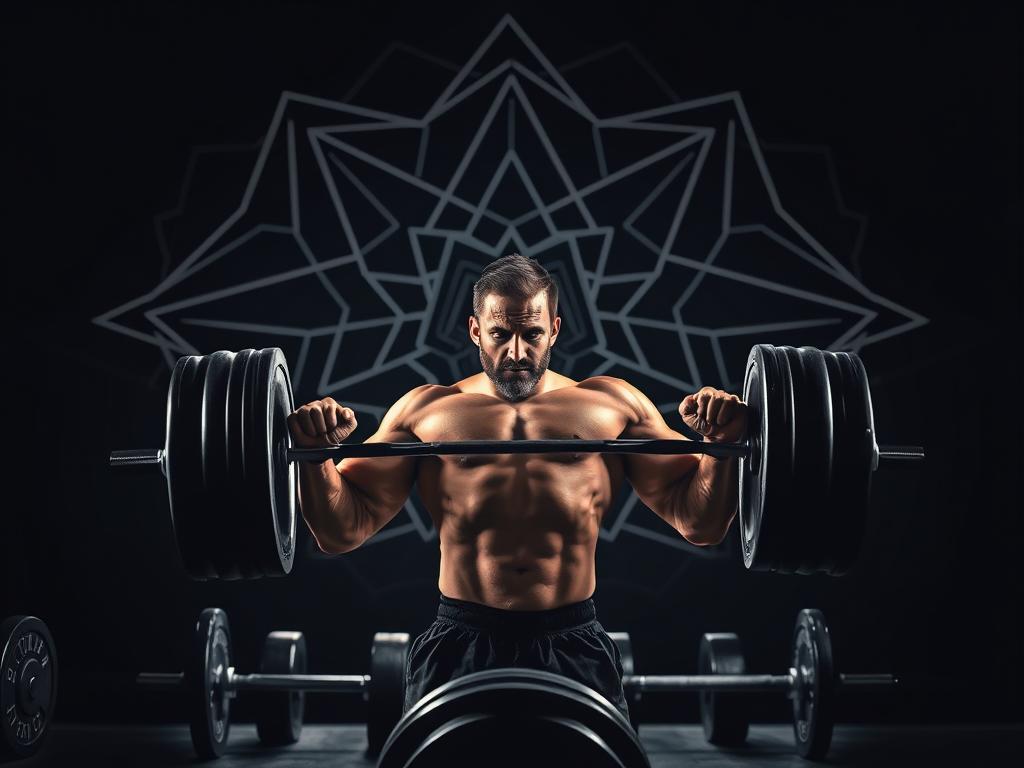
Weight training offers amazing benefits beyond muscle building. It transforms body and mind, delivering comprehensive health advantages. This powerful exercise impacts multiple aspects of physical fitness7.
Strength training provides exceptional cardiovascular protection. Research shows it can reduce heart attack and stroke risks significantly. Just one hour of weekly training can cut these risks by 40 to 70 percent7.
The muscle-building process enhances physical strength and supports critical health markers. It improves bone density and reduces osteoporosis risk7.
- Improves bone density and reduces osteoporosis risk7
- Boosts metabolic rate and supports weight management8
- Enhances mental health and reduces depression symptoms7
The psychological benefits of weight training are profound. Resistance training significantly reduces depression symptoms. It provides a powerful tool for mental wellness7.
Strength training empowers individuals, transforming not just physical capabilities but mental resilience as well. It builds a stronger, more resilient version of yourself.
Strength training isn’t just about muscles – it’s about building a stronger, more resilient version of yourself.
Experts recommend strength training twice weekly for optimal health8. Even 30 to 60 minutes per week can deliver substantial health benefits. It’s an accessible and effective fitness strategy8.
Weight training benefits individuals of all ages. From eight-year-olds to adults in their 90s, resistance training improves muscle mass and power. It enhances overall physical function for people across all age groups8.
Is Pilates Better Than Lifting Weights?
Choosing the right fitness approach depends on your goals and health needs. Pilates and weight training offer different benefits for muscle growth and body shape9.
Impact on Muscle Development
Weight training is better for building muscle size. It can boost muscle strength by 37% and mass by 7.5% with weekly sessions10.
Pilates, however, focuses on lean muscle and core strength9.
- Weight training builds muscle mass effectively
- Pilates creates lean, strong muscle groups
- Muscle development varies based on exercise intensity
Effects on Body Composition
Both methods change your body, but in different ways. Weight training burns calories more efficiently and improves overall body shape9.
The calories burned and muscles used vary greatly between these training methods10.
Long-term Health Benefits Comparison
Both offer unique health perks. Pilates excels in flexibility and posture improvement. Weight training supports bone density and metabolic health9.
Combining both could provide a well-rounded fitness approach10.
The most effective fitness strategy integrates multiple training modalities for comprehensive physical development.
Your fitness goals, physical condition, and preferences will guide your choice of training method9.
Body Transformation: What to Expect from Each Method
Pilates and weightlifting shape your body differently. Each method offers unique benefits for your physique. Let’s explore how these approaches can transform your body11.
Pilates creates a lean, elongated body with strong core muscles. It focuses on precise movements to develop a streamlined physique11. Practitioners often gain long, toned muscles and better posture.
Pilates also enhances body awareness. These benefits come from controlled exercises that target specific muscle groups.
- Long, toned muscles
- Improved posture
- Enhanced body awareness
Weightlifting builds a more muscular and defined appearance. It emphasises muscle growth and strength development11. This method leads to visible muscle definition and increased overall strength.
Weightlifters often see significant gains in muscle mass. The training stimulates muscle growth and improves physical strength.
- Increased muscle mass
- Greater overall strength
- More visible muscle definition
Both methods help reduce body fat and build muscle11. Pilates offers a low-impact approach, suitable for beginners or those recovering from injuries12.
Weightlifting provides intense muscle development. It also continues burning calories after the workout12.
Fitness experts suggest combining both disciplines for best results. This balanced approach can improve overall fitness and activate neglected muscles12. It helps create a strong, well-rounded physique.
Combining Both Disciplines: A Balanced Approach
A comprehensive fitness routine that blends Pilates and weights can transform your workout strategy. This Pilates and weights combination taps into the strengths of both methods. It creates a well-rounded approach to physical fitness1314.
Creating an Effective Hybrid Routine
Crafting a balanced fitness schedule needs careful planning. The goal is to blend Pilates and weight training effectively14.
- Start with 2-3 exercise days per week
- Alternate between Pilates and strength training sessions
- Focus on complementary muscle groups
Optimal Training Schedule
A solid approach might use strength training that builds on Pilates-enhanced core strength. Compound movements matched with Pilates flexibility work can boost overall performance14.
| Training Type | Focus | Benefits |
|---|---|---|
| Weight Training | Muscle Strength | 37% increase in muscle strength13 |
| Pilates | Core Flexibility | Improved mobility and core engagement14 |
Recovery and Progress Monitoring
Keeping track of your fitness journey is vital. This hybrid approach helps build lean muscle, which burns more calories.
It also boosts your metabolic rate14. Regular check-ins help fine-tune your fitness plan and ensure steady progress13.
Conclusion
Choosing the right exercise routine depends on your personal goals and fitness level. Pilates and weight training both offer unique benefits. Your choice should align with your health objectives15.
Weight training boosts muscle strength and metabolism1516. Pilates excels in core conditioning and body awareness. The best option caters to your specific health aims.
A mix of both methods can activate various muscle groups. This approach can enhance overall fitness performance15. Seek professional advice for a tailored strategy.
Consistency is key in any fitness programme. Choose a routine you enjoy and can maintain. Your chosen method should support your long-term health goals.
FAQ
What is the main difference between Pilates and weightlifting?
Pilates focuses on core strength, flexibility, and body awareness through controlled movements. Weightlifting builds muscle mass and strength using resistance training. Pilates develops lean muscle and body alignment, whilst weightlifting targets specific muscle groups for size and power.
Can Pilates help with weight loss?
Yes, Pilates can aid weight loss by boosting metabolism and improving muscle tone. It builds lean muscle mass, which enhances metabolic rate. This supports long-term weight management, despite burning fewer calories than high-intensity exercises.
Is weightlifting safe for beginners?
Weightlifting can be safe for beginners when done properly. Start with correct technique and appropriate weights. Consider working with a certified trainer to learn proper form and prevent injury.
Beginners should focus on mastering movements before increasing weight and intensity.
How often should I do Pilates or weightlifting?
The ideal frequency depends on your fitness goals and current level. Generally, 2-3 sessions per week of either activity can provide significant benefits. Allow 48 hours of recovery between strength training sessions for the same muscle groups.
Can I combine Pilates and weightlifting in my fitness routine?
Absolutely! Combining these activities creates a comprehensive fitness approach. Pilates enhances flexibility and core strength, improving weightlifting performance. Weightlifting builds muscle strength that supports Pilates movements.
A balanced approach can lead to more well-rounded fitness results.
Which is better for improving posture?
Pilates is renowned for improving posture. It develops muscles that support proper spinal positioning. Weightlifting can also contribute by strengthening back and core muscles.
However, Pilates offers more direct postural benefits.
Do I need special equipment for Pilates or weightlifting?
Pilates typically requires minimal equipment, often just a mat. Advanced classes might use specialised equipment like reformers. Weightlifting needs weights (dumbbells, barbells, or machines) and involves more gear.
Both can be adapted to home or gym settings with appropriate equipment.
How quickly will I see results from Pilates or weightlifting?
Results vary based on consistency, diet, and fitness level. Most people notice changes in strength and body composition within 4-8 weeks. Pilates often shows quicker improvements in flexibility and posture.
Muscle growth from weightlifting may take slightly longer to become visible.
Is one method better for mental health?
Both Pilates and weightlifting offer mental health benefits. Pilates emphasises mindful movement and breathing, reducing stress. Weightlifting can boost mood through endorphin release and increased self-confidence.
The best choice depends on personal preference and individual response.
Can older adults practice Pilates or weightlifting?
Both can be adapted for older adults with proper guidance. Pilates is often recommended due to its low-impact nature. Weightlifting can maintain muscle mass and bone density.
Older adults should approach weightlifting carefully with lighter weights and proper supervision.
Source Links
- Pilates vs. Weight Training: Which Is Best For Weight Loss, Muscle Building, and More
- Pilates vs Weight Training: Which One Builds the Better Body?
- Pilates vs weight training: what are they and what’s best for you?
- Pilates vs Weight Training Body: Which is Better for You?
- Pilates or weight training: Which is better for you?
- What pilates does to your body—and your mind
- Strength Training Might Be Even Better For Your Health Than Cardio
- Is Strength Training Good for Everyone?
- The Pros And Cons Of Pilates Vs. Weight Training
- Pilates vs. Weight Training: Which Is Best For Weight Loss, Muscle Building, and More
- Pilates vs Weight Training: Which is Best?
- Pilates vs. Weight Training: Which Is Best For Weight Loss, Muscle Building, and More
- Pilates vs. Weight Training: Which Is Best For Weight Loss, Muscle Building, and More
- How Does Pilates Compare to Strength Training?
- Pilates vs. Weight Training: Which Is Best For Weight Loss, Muscle Building, and More
- Pilates vs Weight Training for Weight Loss: Which is More Effective?
